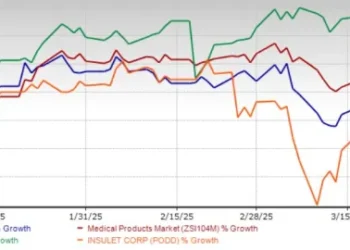When a federal agency changes the way money flows, the effects aren’t always immediate — but they’re often profound.
In a move quietly announced and now rippling across the healthcare policy world, the Centers for Medicare & Medicaid Services (CMS) plans to end the federal matching for certain Medicaid funding requests submitted by states. What may sound like a bureaucratic adjustment is, in reality, a pivotal shift in how the United States finances care for its most vulnerable residents.
For decades, Medicaid has operated on a principle of shared responsibility — the federal government matches a percentage of what states spend on approved services for low-income populations. But as CMS tightens oversight and narrows what counts as a reimbursable request, many state officials are left asking: What happens when the match ends?
Understanding the Federal Match — and Why It Matters
At the heart of Medicaid’s financial structure is the Federal Medical Assistance Percentage (FMAP), which determines how much the federal government contributes to a state’s Medicaid program. For example, if a state’s FMAP is 60%, the federal government pays 60 cents for every dollar the state spends on eligible Medicaid services.
This system provides a vital financial backbone, particularly in economically distressed states where Medicaid is often the largest single line item in the budget.
But not all spending qualifies equally. Over the years, states have submitted “supplemental payment” requests — complex financial arrangements often involving provider fees, intergovernmental transfers, or managed care wraparound payments. Some of these tactics have raised red flags at CMS, prompting increased scrutiny and now, policy change.
With the new rules, CMS is signaling that certain supplemental payments will no longer qualify for federal matching, forcing states to cover the full cost themselves — or cut back.
Why CMS Is Making the Change
According to CMS, the goal is transparency, fiscal integrity, and accountability. For years, federal auditors and watchdog groups have warned that some states were using non-transparent financing mechanisms to draw down more federal funds than intended.
In particular, CMS has expressed concern about:
- Intergovernmental transfers that shift funds among state and local agencies in ways that obscure the true source of the state’s share.
- Supplemental payments to hospitals and managed care organizations that exceed the value of services actually delivered.
- Provider taxes that artificially inflate Medicaid spending in order to generate higher federal contributions.
In a 2024 statement, CMS officials noted that the changes are designed to ensure that “federal dollars support legitimate healthcare expenses, not financial engineering.”
The State-Level Fallout
States, however, are sounding the alarm.
Many argue that CMS’s new approach places them in a fiscal chokehold, especially at a time when Medicaid enrollment remains elevated post-pandemic, and inflation continues to drive up healthcare costs. States that relied heavily on supplemental payments — often as a way to stabilize hospital systems or fund rural health access — now face the prospect of deep budget shortfalls.
One state Medicaid director, speaking anonymously, called the policy a “backdoor cut” that disproportionately affects safety-net providers, particularly in low-income, rural, and minority communities.
States have only a few options:
- Raise taxes to cover the gap.
- Cut Medicaid enrollment or benefits.
- Reduce payments to providers, potentially driving them out of the Medicaid market.
- Delay or cancel planned program expansions, including those involving mental health or maternal care.
The long-tail keyword search trend “how will states pay for Medicaid without federal match?” has seen a noticeable uptick, reflecting widespread concern not just in policy circles, but among citizens and healthcare advocates.
Healthcare Providers Caught in the Crossfire
For hospitals and clinics — especially those operating on thin margins — the CMS change is more than a policy issue. It’s a matter of survival.
Many safety-net hospitals rely on supplemental Medicaid payments to offset the cost of treating uninsured or underinsured patients. With federal matching gone, those payments may shrink or vanish entirely, creating what one healthcare CFO described as a “financial cliff.”
And it’s not just hospitals. Nursing homes, community mental health centers, and Federally Qualified Health Centers (FQHCs) also stand to lose critical funding streams. These providers often serve complex patients with high-cost needs — the very populations Medicaid was designed to protect.
The cumulative effect could be reduced access, longer wait times, and declining quality of care for millions of Americans who rely on Medicaid as their primary — or only — source of coverage.
A Deeper Question: What Is Medicaid Becoming?
Beyond spreadsheets and funding formulas, the CMS decision raises an existential question: What do we expect Medicaid to be in the 21st century?
Should it remain a patchwork system, shaped by political winds and fiscal pressure? Or should it evolve into a robust, equitable foundation for national health — particularly as chronic illness, aging populations, and health inequities become more pronounced?
Healthcare economists point out that federal-state friction over Medicaid funding isn’t new. But this latest development, they argue, reflects a broader tension: the gap between what Medicaid is asked to do, and the resources it’s given to do it.
If Medicaid is expected to serve as the front line for mental health care, long-term services, maternal health, and chronic disease management, it will need stable and sufficient funding — not just at the mercy of technical reimbursement rules.
Policy Watchers and Legal Challenges Ahead
Some states and provider groups have signaled they may challenge the CMS changes legally, arguing that the federal government is overstepping or violating the cooperative agreement at the heart of Medicaid.
Others are lobbying Congress to intervene with legislative clarity, particularly on issues related to supplemental payments and provider taxes.
In the meantime, Medicaid directors across the country are scrambling to rewrite budgets, renegotiate provider contracts, and communicate uncertainty to stakeholders who want answers.
Final Thoughts
The CMS decision to end federal matching for certain Medicaid payments may not make national headlines — but for state governments, healthcare providers, and millions of low-income Americans, it represents a turning point in how public health is funded and managed.
Like many policy decisions in Washington, the full consequences will play out slowly, across years and state lines. But the underlying message is clear: Medicaid’s future is no longer just about health. It’s about trust, transparency, and the political will to prioritize care for the people who need it most.















